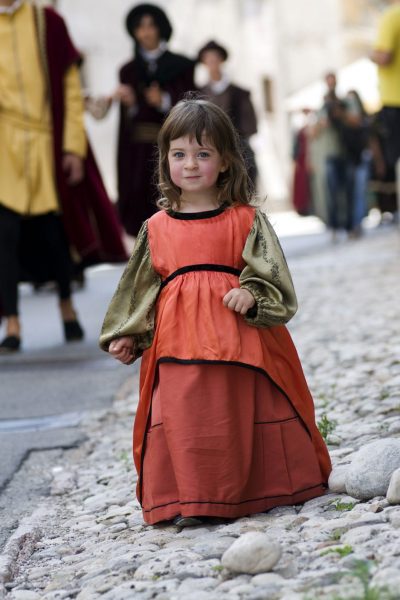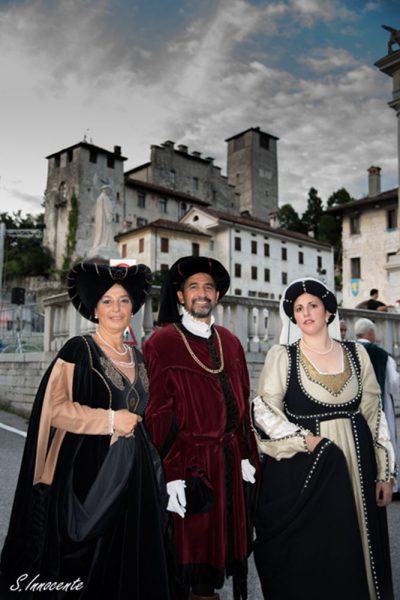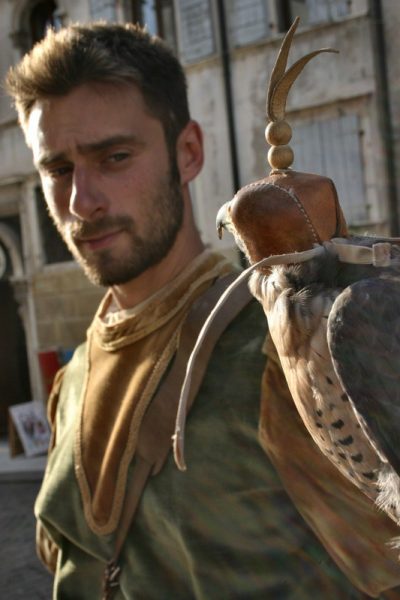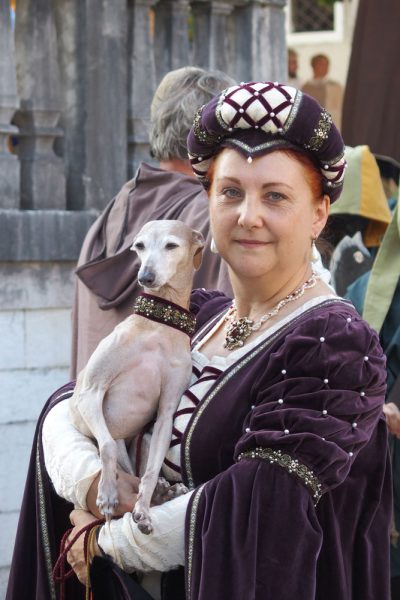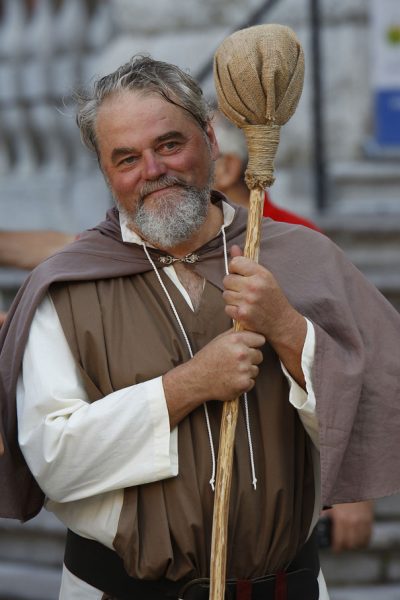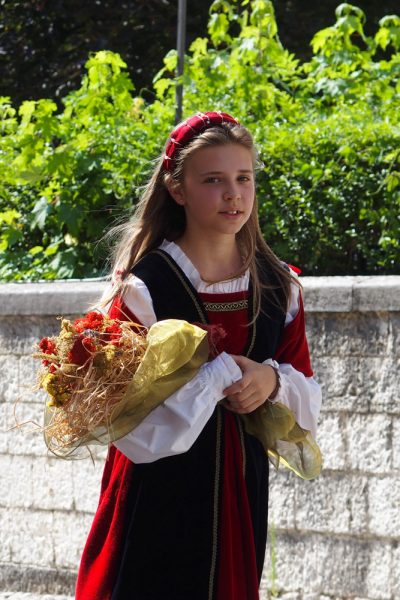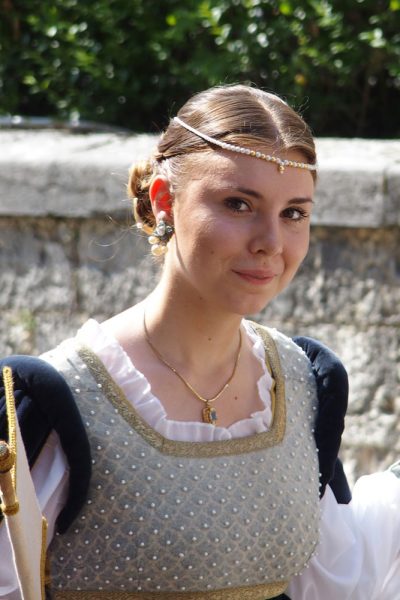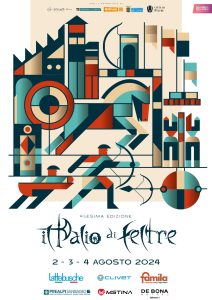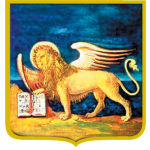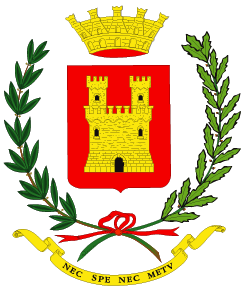The four Quarters set themselves, in the composition of their procession, a precise historical reference identifiable in the early 15th century. Important iconographic sources for the creation of the historical clothing used in the Palio of Feltre were, in addition to the few frescoes that survived after the great fire that struck Feltre in 1510, the Cycle of the Months at Torre Aquila in Trento, as well as the decoration of Castel Ivano in Valsugana. Leaving the local sphere, another fundamental reference was the pictorial cycle decorating Palazzo Schifanoia in Ferrara, which also portrays the appearance of Vittorino de’ Rambaldoni, an important son of the city of Feltre who brought prestige to his homeland beyond its borders.
The study of these historical archetypes is constantly carried out by the seamstresses of the individual quarters, as well as – on behalf of the Ente Palio – by Luisa Dalle Grave, who has long been responsible for making the splendid costumes that are then put on display during the parades. The first studies on historical costumes, and their relative tailoring, were carried out at the dawn of the Palio by the Feltre painter Marula Tarricone, who was inspired by Feltre iconography for the clothes of the representatives of the Dolomite city and by Venetian examples for the delegates of the Serenissima Republic of Venice.
The procession of the Quartiere is made up of standard-bearers, bannermen, armourers, pageboys, commoners and knights; all punctuated by the roll of the drums whose deafening rhythm sets the tempo for the colourful whirling of the flag-wavers, distinguished by the colours of the Quartiere.
The attention of those watching the participants of the historical procession, however, tends to focus on the costumes of the nobles of the Great Council of the City, who elegantly walk up Via Mezzaterra, which divides the citadel of the historic centre in half.
The privileged nobility that governed the City of Feltre consisted of 70 representatives of high lineage; each Quartiere counted among their ranks those who historically had their ‘residence’ in the city centre of the Quartiere or in the Rioni of the Contrada.
The 15th century is a great century in continuous ferment, a prelude to the Renaissance.
The ancient fashions were quickly modified and renewed, undermining the dress that had long remained almost unchanged or of very slow transformation.
One can think of Feltrino dress in the 15th century as very poor for the common people and the less well-off, while something more, certainly, was the prerogative of the nobility who looked to Venetian ‘fashion’.
Quickly analysing the fabrics that served the wardrobe of the time, we find a well-defined category of fabrics: linen, wool in all its qualities and forms, velvet and that particular fabric made of half wool and the other half hemp, called ‘mezzalana‘. Textile production was particularly important in Feltre, favoured on the one hand by the abundance of raw materials (wool above all) and on the other by the possibility of using water power for processing.
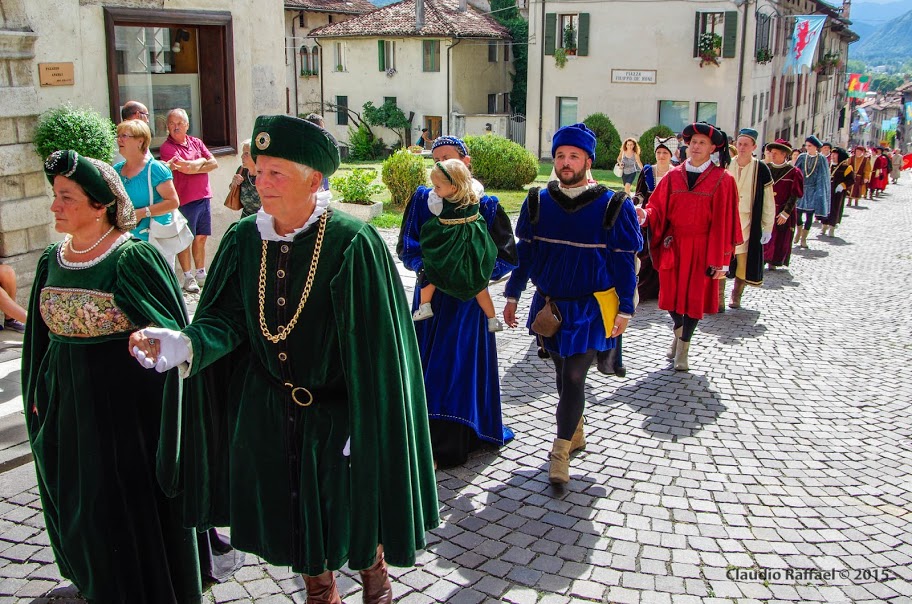
La montura di un nobile
La montura di un nobile era generalmente composta da un farsetto con collaretto chiuso da lacci e stringhe con sopra un corto giubbetto detto “zapparello”, spesso a gale e bordato, con cintura e maniche larghe al gomito e strette all’avambraccio.
Le calzamaglie erano in lana a tinta unica o divisate a due colori, calzatura semplice o stivaletto di cuoio.
Le sopravesti erano molte e di diverse fogge: si va dai mantelli corti o lunghi, con attacco alle spalle, i tabarri, sino alle lunghe ed ampie vesti dottorali, o la sopraveste scavata nei fianchi per lasciar vedere la tenuta sottostante.
Il copricapo variava dal cappuccio fino al berretto, tra cui il più importante ed usato era il “masocchio” dall’alto bordo imbottito (o ciambella) da cui ricade sulle spalle un drappo sbuffante.
Pochi gli accessori: i guanti, la scarsella o borsello allacciato alla cintura, ed ampie collane con medaglioni in metallo prezioso.
Abito femminile di dama
Capo principale nel comporre l’abbigliamento di una nobildonna era la lunga veste di lana, di colore unico, arricchita da qualche ricamo o guarnizioni di velluto, con la linea della vita alta e scollo abbondante.
Le vesti più pregiate potevano contare su abbinamenti di colore come le maniche staccate dalla veste, di tessuto diverso e pregiato, unite da lacci od organze a formare spacchi generosi (spesso dalla spalla al polso magari divisi in più sbuffi) da cui fuoriesce la camicia di lino.
Nei vestiti importanti, il lungo mantello – talvolta a strascico – era di grande effetto, fissato alle spalle o sorretto in parte con l’avambraccio; per giungere all’acme dell’eleganza , la grande “hoppelande” di origine francese, unico pezzo di stoffa infilata dalla testa dalle ampie maniche con grandi aperture per le braccia, rivoltate ed arricchite da organze.
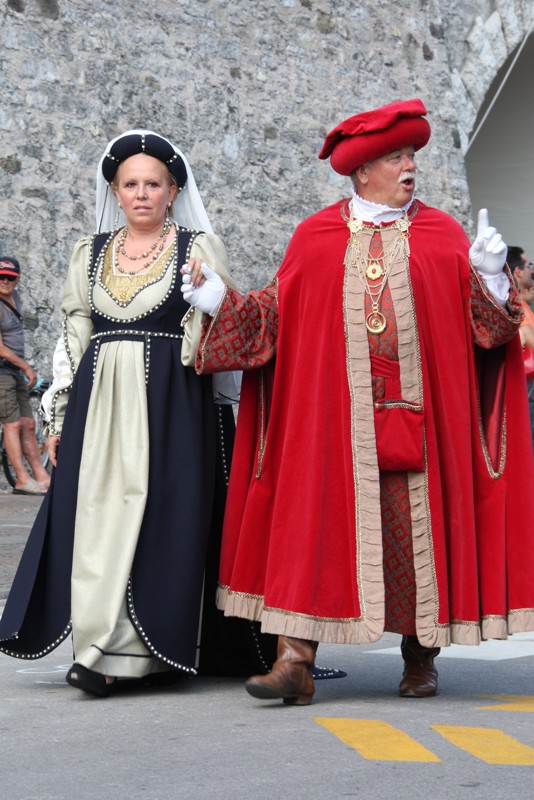
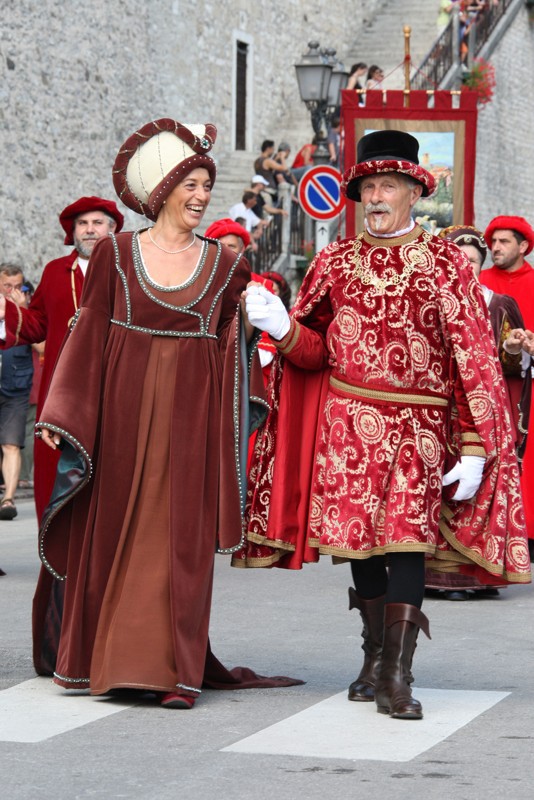
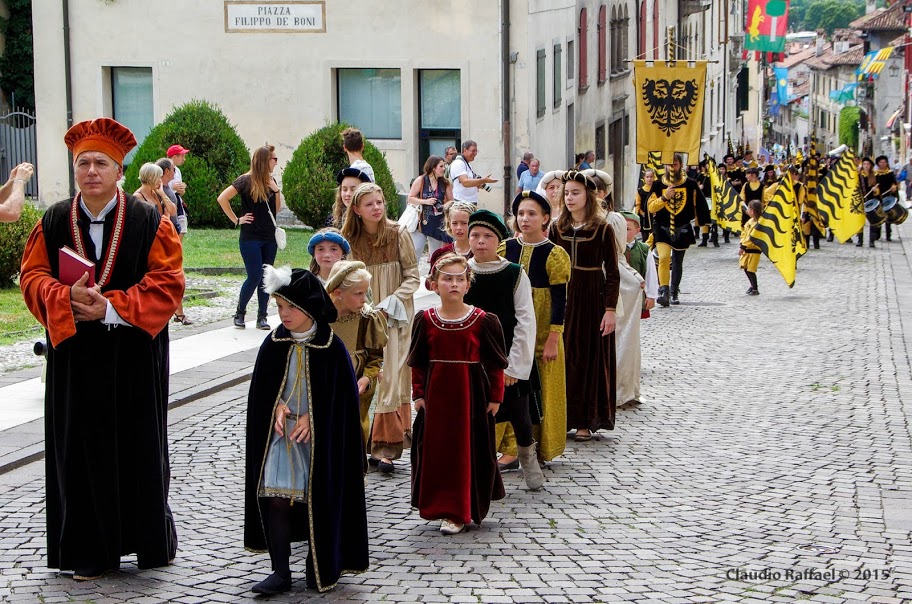
I copricapo più esclusivi sono quelli conformati “a sella” in velluto, mentre più comuni erano le trecce di stoffa avvolte attorno alla testa, le coroncine con o senza velo che incorniciavano il voto annodate alla nuca, o i canestri di filo o di perle detti “vespai” alla veneziana, per raccogliere i capelli sulla nuca lasciando libera la visione del collo.
Non si usava molto trucco ed i gioielli più comuni erano collane ed abbellimenti con perle.
Da diversi anni, le acconciature e la moda dei copricapi femminili vengono seguiti con attenzione grazie alla collaborazione con l’ENAIP Veneto di Feltre.

